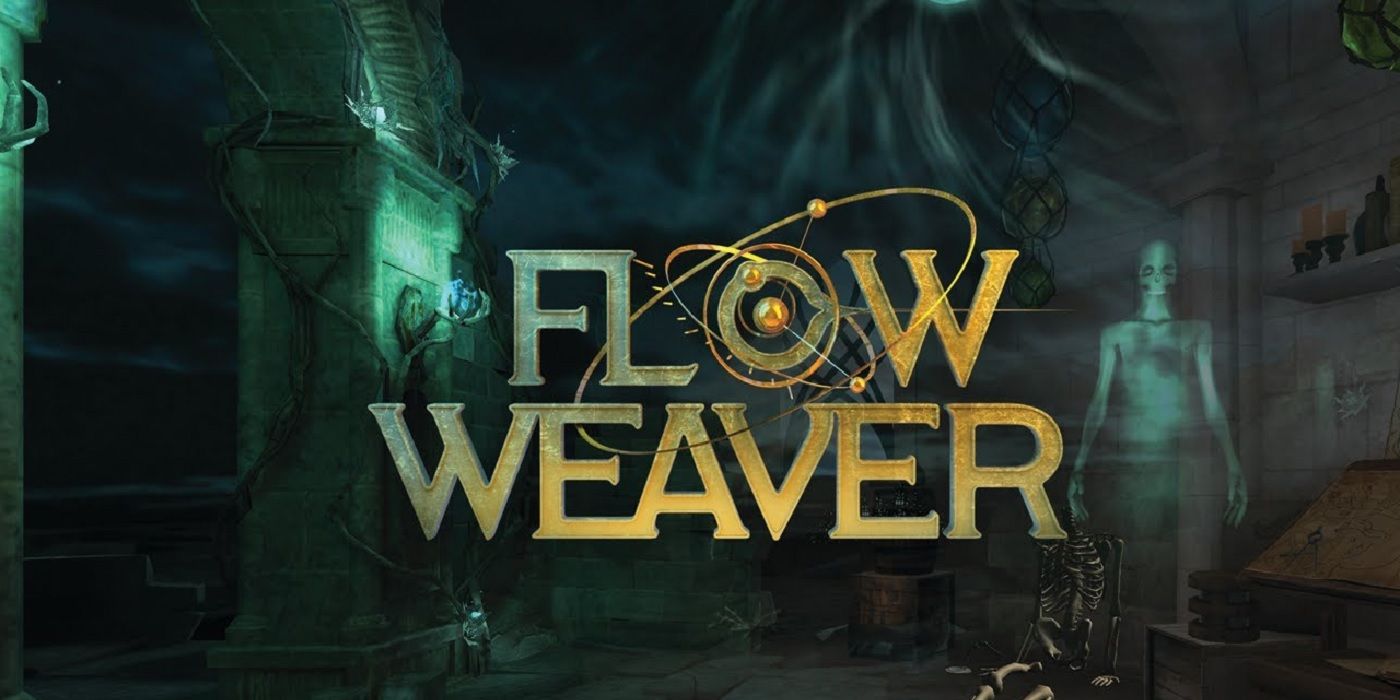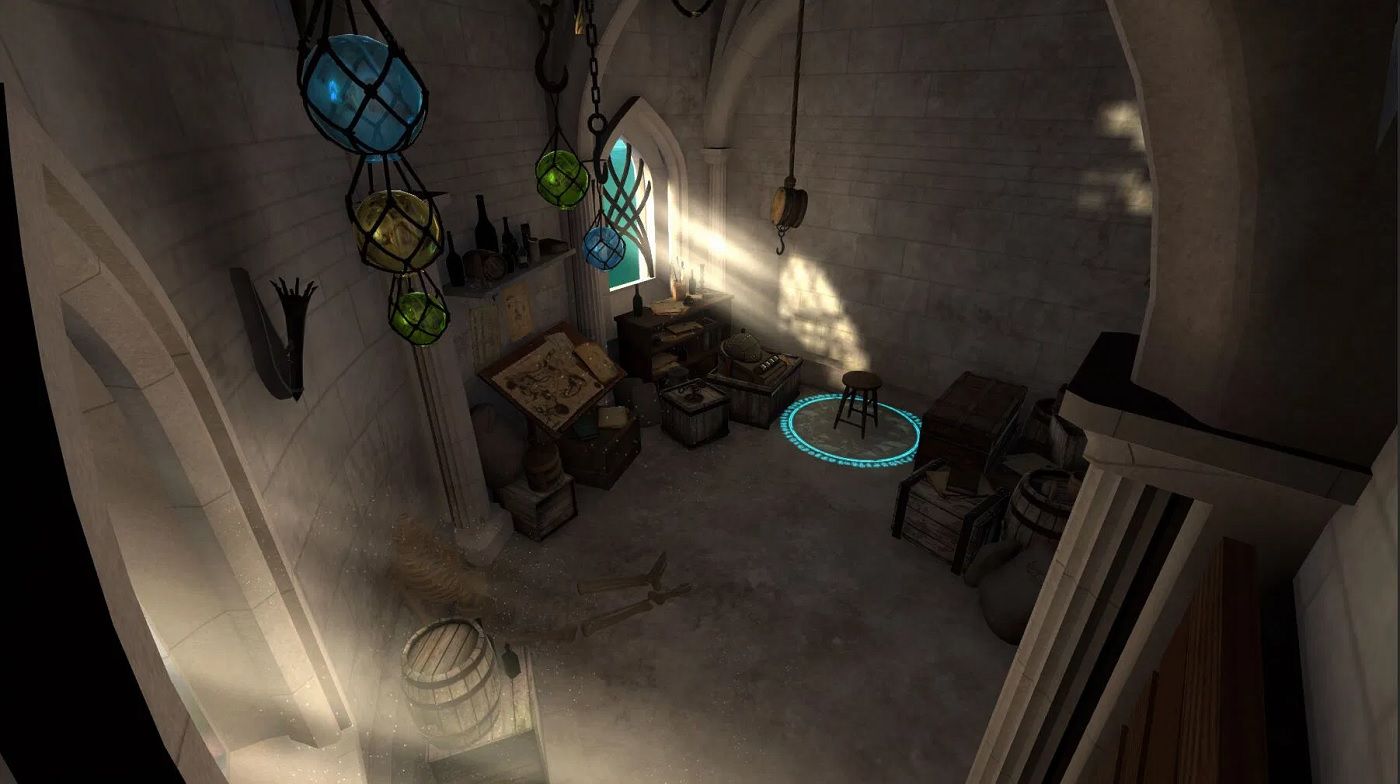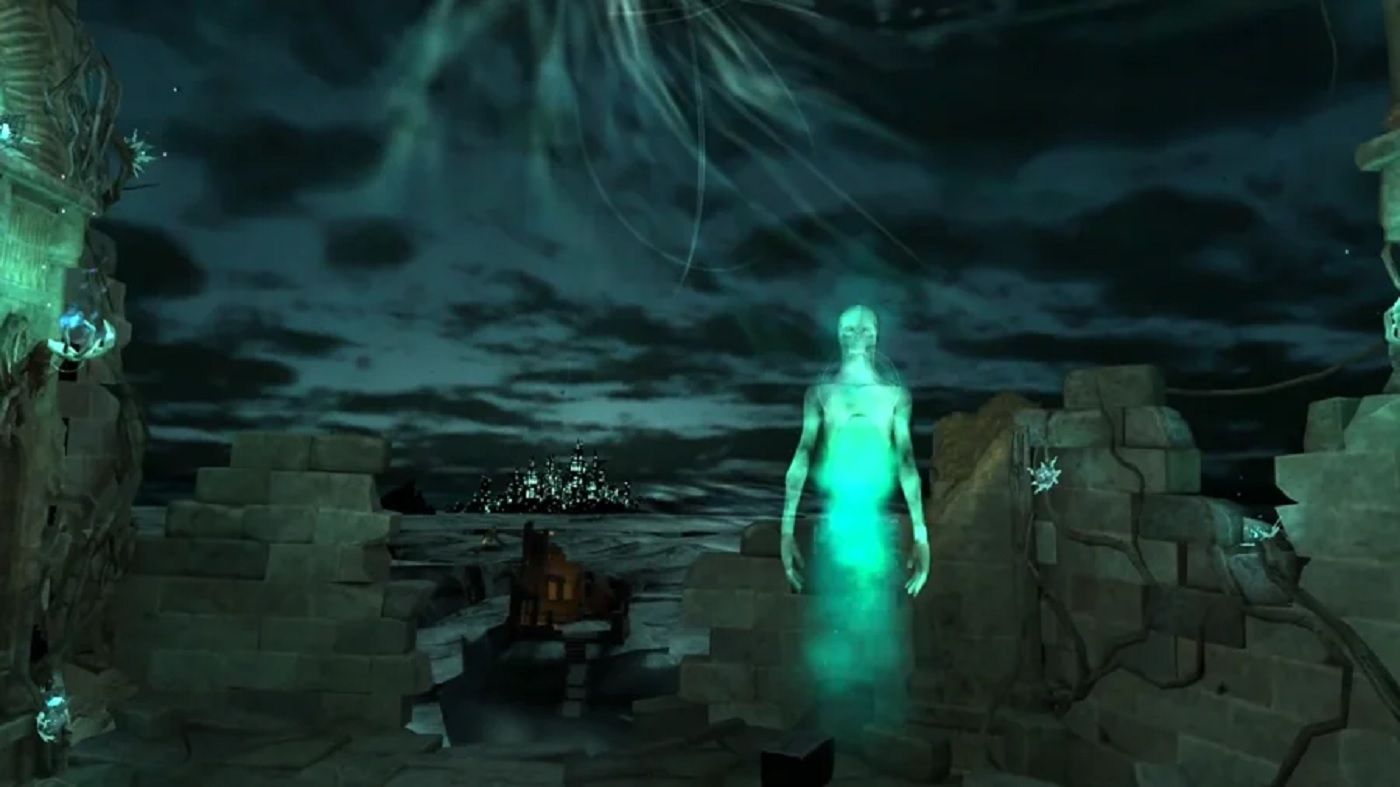
Escape rooms have been all the rage this past decade, with all kinds of escape room experiences readily available throughout the United States and around the world. Some escape rooms have been known for their use of virtual reality technology, and so it's natural that escape room experiences have been developed for consumer-grade VR headsets as well. There are quite a few escape room VR experiences for fans to choose from, but one they should avoid is the recently released Flow Weaver on Oculus Quest.
Flow Weaver is a stationary VR experience, which seems counter to the spirit of an escape room. The fun thing about escape rooms is being able to explore them, messing with different objects and trying to figure out how to solve the puzzles. The main character in Flow Weaver is a sorceress who is stuck in place thanks to magic binding them to one spot, and simply put, that does not make for a very entertaining escape room experience. It doesn't help that the default stationary boundary is not wide enough to properly accommodate for times when players need to reach to interact with objects, so they'll still need to create their own custom boundary Guardian anyway.
While the player character is stuck in place, she is still able to interact with the world around her thanks to magical spells that she acquires throughout the game. One of the first ones that the sorceress learns lets her pick up distant objects and bring them closer to her, which is a very basic gameplay mechanic that's often baked into many VR games by default. Unfortunately, this sets the tone for the rest of the spells that the sorceress gets in the game. Most of her abilities amount to little more than pointing and clicking on things, which makes for a rather dull time.

There are no cool magic spells for players to look forward to in Flow Weaver, which means progressing through the game isn't very satisfying and there is no real reward for making it through its puzzles. The only thing Flow Weaver gives players for completing its puzzles is the chance to move on to the next puzzle until they manage to get to the end and are treated to one of the most bizarre, abrupt endings in all of gaming. It will leave players feeling shortchanged and frustrated that they invested their time in the game.
Flow Weaver's story sees the sorceress character trying to figure out how to break free from her magic spell, which was apparently cast on her by a necromancer that looks like a humanoid dinosaur. Despite this strange premise, the story is boring, uneventful, and the conclusion is insulting, making it a complete waste of time to try to get invested in what's going on. What's worse is that players can't skip through the cut-scenes.
The unskippable scenes and dialogue in Flow Weaver are made somewhat bearable by the game's surprisingly great voice acting, but that goodwill is tarnished when taking into account its baffling save/checkpoint system and game-breaking bugs. Flow Weaver's autosaves are placed in weird places, sometimes putting players back by an entire puzzle room and forcing them to sit through dialogue that they have already sat through. This issue rears its ugly head when players decide to take a break from the game and come back later, which is bad enough, but it's also a major problem when players are forced to restart due to bugs.

Flow Weaver sometimes fails to load the next event necessary for players to progress, sometimes leaving them stuck in an area and forcing a restart. This seems to happen most often when the necromancer shows up to monologue. After they're done talking, they're supposed to disappear and let players continue trying to solve the puzzles, but sometimes they stay in place, and there doesn't seem to be any way to fix the problem besides restarting the game.
Even if Flow Weaver didn't have these serious technical issues, it still wouldn't be a compelling gameplay experience. The puzzles are rarely difficult because they are clever, but rather because the object players need to continue is hard to spot. An early example of this is when players need to pull a branch off an arch and use that to light some candles in a different area. The branch blends in with other branches that can't be interacted with, and while players can use an ability to point out important objects in the environment, it's still not always obvious what they can interact with and what they can't. What ends up happening is players will find themselves clicking wildly around the game world hoping to find something that they can grab to finish the puzzle.
Flow Weaver does have one interesting gameplay idea, and that's how it lets players hop between dimensions. From the material world, players are able to visit a Fairy world, a Shadow world, the Underworld, and more. These are all different versions of the room in the material world, and actions taken in one dimension can impact the other. The game's more engaging puzzles revolve around this concept, and it can be fun to experiment and see what happens. Unfortunately, Flow Weaver is very rigid and linear in nature, so this concept doesn't reach its full potential.

Players will almost certainly get stuck trying to solve Flow Weaver's puzzles, so the game will likely take a few hours to complete. However, if one is quick about solving the puzzles and they don't run into any game-breaking bugs, it's reasonable that Flow Weaver could be completed in an hour or less. Many VR games are on the shorter side, but this is even shorter than usual, and so it's something VR enthusiasts should keep in mind.
Flow Weaver's short length is the least of its problems. While it does have some interesting ideas, it's not fun to play and often feels like a chore. The voice acting and art style are both appealing, but neither are enough to justify a playthrough. There are far superior escape room experiences available for virtual reality headsets that fans of the concept should consider checking out instead.
Flow Weaver is available for Oculus Quest and Oculus Quest 2. Game Rant reviewed the game on Oculus Quest.

